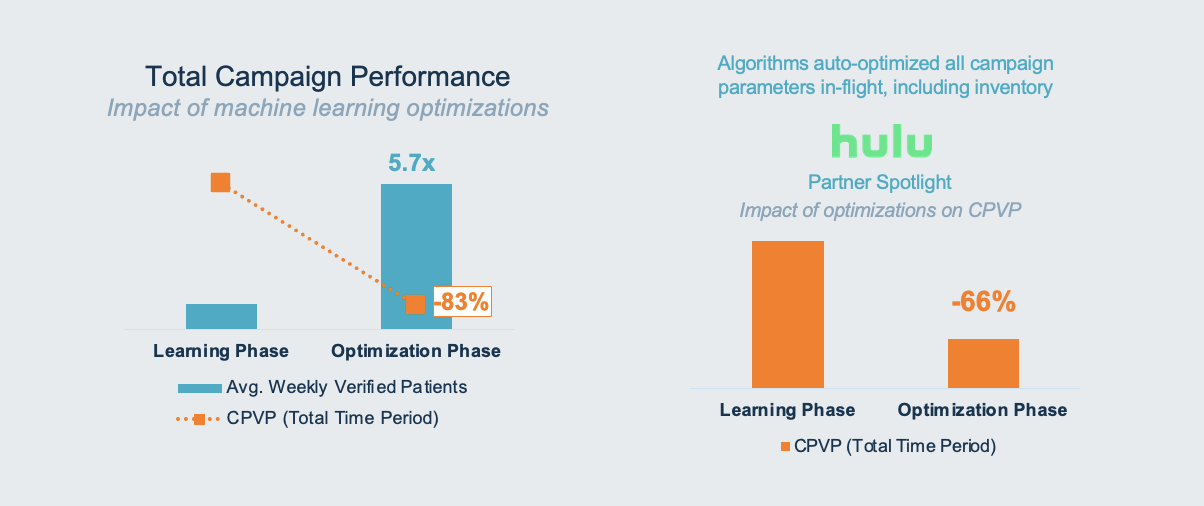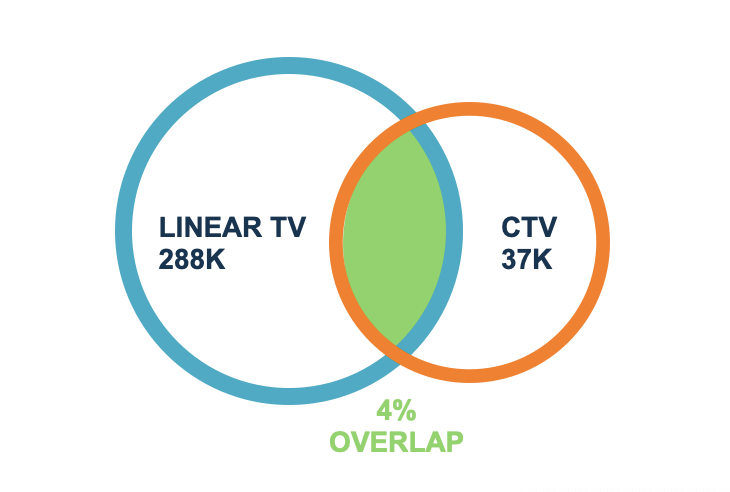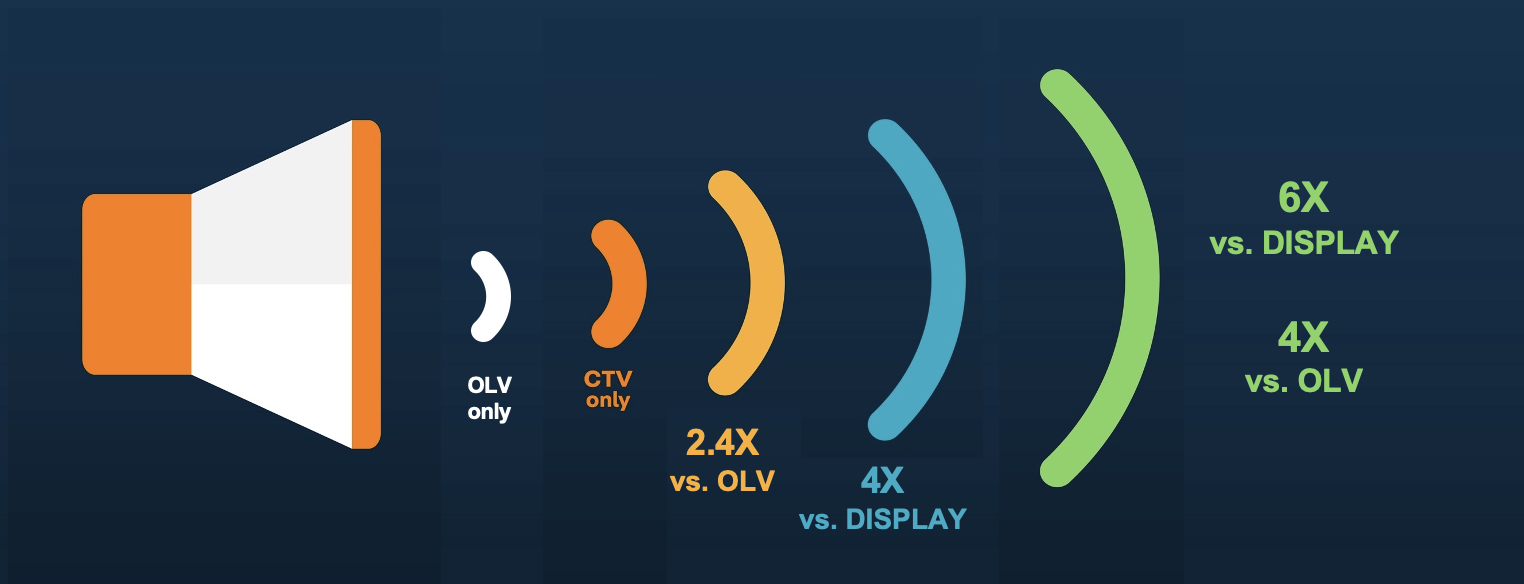Three Considerations for Pharma Advertisers Switching from Linear TV to CTV

For decades, traditional or linear TV has dominated the budgets of pharma advertisers. To meet industry recommendations developed decades ago, which call for audience sizes to be at least 10% of the targetable population, life sciences companies have turned to TV where it’s possible to reach millions at scale.
However, something interesting happened in 2022: Pharma brands decreased their linear TV ad spend for the first time. Last year, linear TV represented 43% of the industry’s media mix, according to Standard Media Index data. Brands have increasingly reallocated those ad dollars toward digital channels, particularly connected TV (CTV).
CTV had been steadily growing for years, its popularity only accelerated by the pandemic. By June 2022, the Leichtman Research Group found that 87% of U.S. households have at least one CTV device, which includes smart TVs, streaming devices like the Fire TV Stick, and game consoles. Beyond its popularity, CTV works.
Unlike linear TV, where advertisers have to cast a wide net to reach their patient audiences, CTV offers data-driven programmatic targeting. This empowers pharma advertisers to create campaign-specific patient audiences based on robust, anonymized healthcare and behavioral data, as well as demographics. From there, they can optimize live campaigns while gleaning actionable insights from faster, superior measurement.
The shift from linear TV to CTV is not just a trend, but rather the mark of a new brand battlefield for pharma advertisers. Here are three things to consider as you make the switch.
- CTV Can Engage the Most Relevant Patient Audiences
CTV’s superior data-driven targeting capabilities are now enabling pharma advertisers to reach specific patient populations with a level of privacy-safe HIPAA-compliant precision that was impossible until just a few years ago. Consider that, historically speaking, media buyers have always had to cast a wide net based on program demographics when planning TV campaigns – no matter how small the target audience they wanted to reach. In addition, planning decisions were mostly made based on one or two variables, such as a show’s target age or gender, versus the four or more variables that programmatic CTV affords.
Today, it’s possible to reach specific patient populations in a privacy-safe way with the use of machine learning technology, which can pore over real-world clinical data to determine correlations between demographics and disease to create campaign-specific modeled audiences. Machine learning algorithms can even find audience-specific correlations down to a single show or program and automatically optimize campaigns based on real-world outcomes.
One pharmaceutical company and its agency of record ran a multichannel campaign with DeepIntent to raise awareness for a plaque psoriasis medication. DeepIntent’s machine learning algorithms automatically optimized the campaign in-flight, maximizing media efficiencies. The brand was able to increase verified patient reach by 5.7X while decreasing the cost-per-verified patient by 83%.

- CTV Can Improve the Incremental Reach of Linear TV Campaigns
For many pharma brands, linear TV remains an effective avenue for reaching consumers. But with the number of “cord-cutters” on the rise and the rapid adoption of streaming content viewing –- which has only accelerated during the pandemic – advertisers are rethinking strategies that rely solely on linear TV.
Notably, they’re realizing they can reach new, unique audiences that their traditional campaigns will miss. One lung cancer drug reached 288,000 verified patients with linear TV. Working with DeepIntent, the brand used CTV to extend reach to 37,000 incremental patients, with a mere 4% audience overlap.

This level of visibility into incremental audiences is made possible thanks in large part to automated content recognition (ACR) data, which allows advertisers to understand exactly who is watching what and when. By leveraging ACR data to plan their CTV campaigns, advertisers can ensure that they’re finding new audiences – and not simply reaching existing viewers. Considering that many marketers say their ability to manage reach and frequency across CTV and digital channels is a top concern, integrating ACR data offers a novel approach to this challenge.
- CTV Can Supercharge Other Channels
Linear TV isn’t an outlier. CTV also has the ability to supercharge other digital channels. For pharma advertisers looking to drive audience quality and script lift, CTV as a standalone channel consistently outperforms online video and display media, for example.
However, time and time again, DeepIntent clients have found the best results from digital channels working together in tandem.
One top pharmaceutical company invests heavily in addressable media to support its largest brand, an antiviral medication used to treat symptoms of an infectious disease. Collaborating with DeepIntent on a multichannel campaign, the company’s agency of record found that CTV delivered 2X higher new-to-brand (NBRx) prescriptions than online video and 2.5X higher NBRx than display media. Combined exposure to both CTV and online video drove 4X higher NBRx than display media alone. When all three channels were combined, NBRx was 6X higher than display and 4X higher than online video.

Switching From Linear TV to CTV Represents the Future of Pharma Advertising
Linear TV may have dominated healthcare marketing in the past, but that’s starting to change. Patients are increasingly embracing new forms of media, and it’s time for the pharma industry to catch up or risk getting left behind.
Many leading pharma brands have already recognized this landscape shift and begun trialing CTV as a larger portion of their ad budgets. The result is that they’re generally improving the ROI of their campaigns while becoming much more targeted in their approach. At a higher level, this shift further points to a new era for pharma advertising that’s data-driven and meets patients where they are, in a much more efficient way than previously thought possible.
John Mangano, Chief Analytics Officer, DeepIntent
For the last 15 years, John Mangano has been driving innovation in how the healthcare industry understands the impact of media and marketing technologies on patients and their health outcomes. Mangano leads the Marketing Sciences and Analytics team at DeepIntent where he calls on his vast experience to help DeepIntent be the industry leading demand side platform for planning, activating, measuring, and optimizing healthcare campaigns. He is no stranger to health analytics and marketing technologies. For eight years, he built the health practice at Comscore where he built HCP measurement panels, developed a revolutionary dominants claims-based measurement product which is the standard used across the industry. In the process, he became the voice of how patients interact with health content. For four years, he led the Business Intelligence team at Healthgrades.com where he led the team that quantified their clients’ success, and was responsible for developing the company’s audience targeting strategy, methodology, and cookieless delivery solution. He is a frequent thought leader speaking at many industry events and conferences, and has even testified at FDA hearings. Mangano has an MBA from the Thunderbird School of Global Management and graduated Magna Cum Laude from the University of Florida. He lives in the Washington, D.C., area with his wife and daughter.
